






| Rose-ringed Parakeet (Psittacula krameri (Scopoli, 1769)) |







|
|
Scientific name: Psittacula krameri (Scopoli, 1769) Common name: Rose-ringed Parakeet Other names: Ring-necked Parakeet French name: Perruche à collier Order: Psittaciformes Family: Psittaculidae Size: Body size: 43 cm; Wingspan : 42 to 48 cm; Weight: 95 to 140 g. Habitat: Half-deserts, savannahs, forests bordering rivers, cultivated fields with copses or sparse trees, orchards, gardens. Food: Fruits and seeds. In some regions, the Rose-ringed Parakeet is considered as a pest because of the damages caused to crops. Nesting: The nests are located in tree holes and sometimes in cavity on old walls or rocks. The populations introduced to Europe have one brood of 3 to 4 eggs between January and June. Migration: Sedentary. Geographic area: Tropical zones of the northern hemisphere, in Africa and in Asia. Introduced to Western Europe, to the United States of America, to South Africa, to the Arabian Peninsula and to Japan. |
The Rose-ringed Parakeet has a pale green plumage. The under side of the body and the under side of the wings are yellowish. The tail is long with some blue colour. The bill shows a dark red upper mandible with a black tip and a black lower mandible. Males have a black chin which extends to form a half neck-ring on the sides of the neck where it is bordered by a pink line. This pink line extends onto the nape. Females do not show any black or pink colour. They have an emerald green neck-ring which does not contrast very much with the other parts of the plumage. The flight is straight and fast and accompanied by very typical sharp calls. |
| [To know more about the Rose-ringed Parakeet] [Next picture] [Top] |
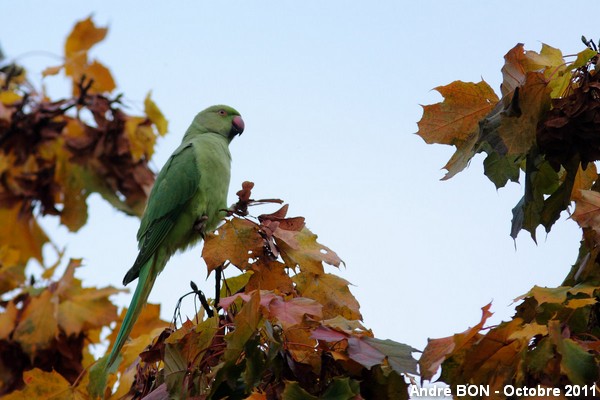
|
I had already observed one or two Rose-ringed Parakeets in this park of the region of Paris in 2010. During this autumn 2011, one colony of about thirty birds, or more, is gathering here every evening to spend the night. |
| [To know more about the Rose-ringed Parakeet] [Next picture] [Previous picture] [Top] |
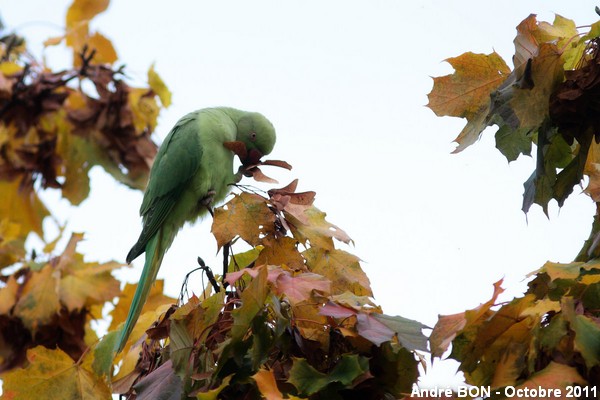
|
The lack of a black half neck-ring indicate one female. I do not think that this invasive species causes important damages to the crops in this region. The main impact comes from the competition with other species nesting in tree holes like Nuthatches as an example. |
| [To know more about the Rose-ringed Parakeet] [Next picture] [Previous picture] [Top] |
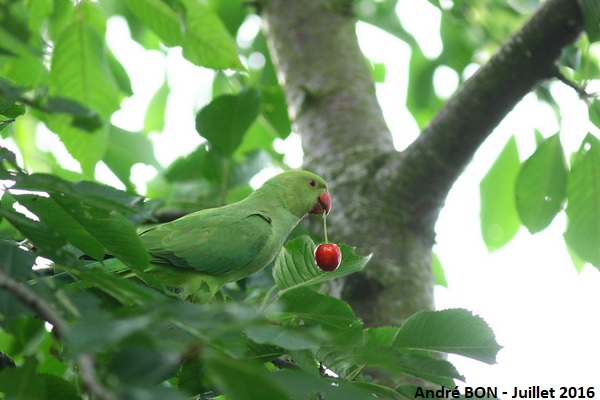
|
The Rose-ringed Parakeets that I often see (and hear) flying over my garden have only been interested on one occasion so far, certainly for my cherries. I saw one, then three and more than ten the next day. They are very good at picking. I hastened to put up the ladder and pick my share so that I had some left. And since they are not shy birds, I was able to take pictures of them a few meters from me in the cherry tree. |
| [To know more about the Rose-ringed Parakeet] [Next picture] [Previous picture] [Top] |

|
Are my cherries good? |
| [To know more about the Rose-ringed Parakeet] [Next picture] [Previous picture] [Top] |
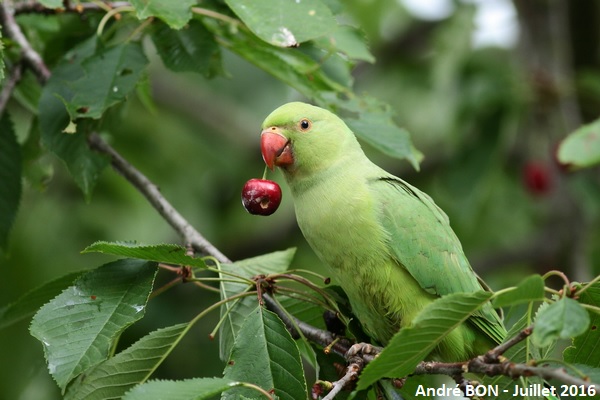
|
My favourite photo of the session. |
| [To know more about the Rose-ringed Parakeet] [Next picture] [Previous picture] [Top] |
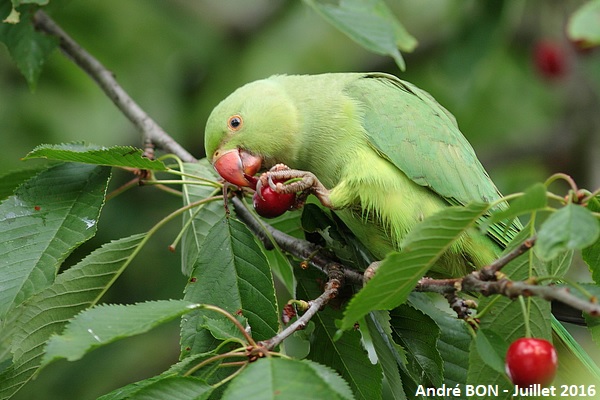
|
What skill, balancing on one leg, the cherry in the other leg for a good tasting. |
| [To know more about the Rose-ringed Parakeet] [Previous picture] [Top] |
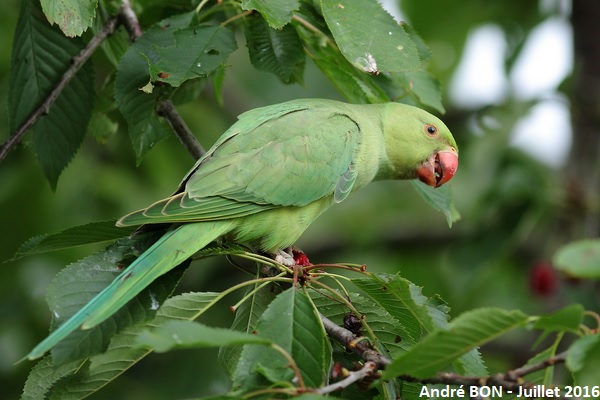
|
My position at the top of the ladder allowed me to observe the Parakeets very closely. |